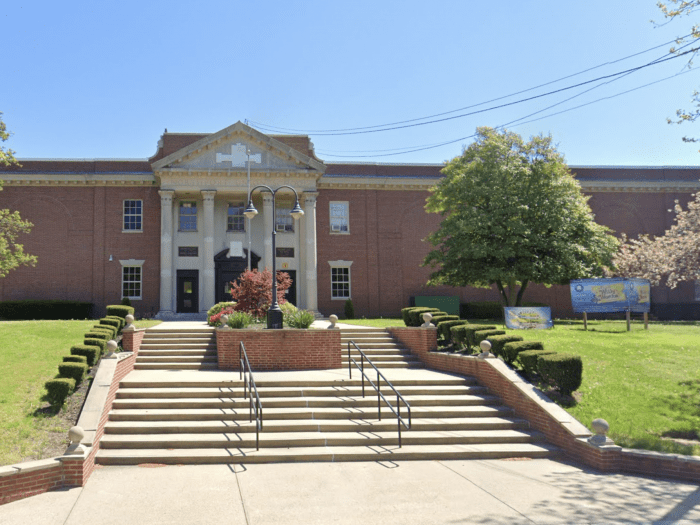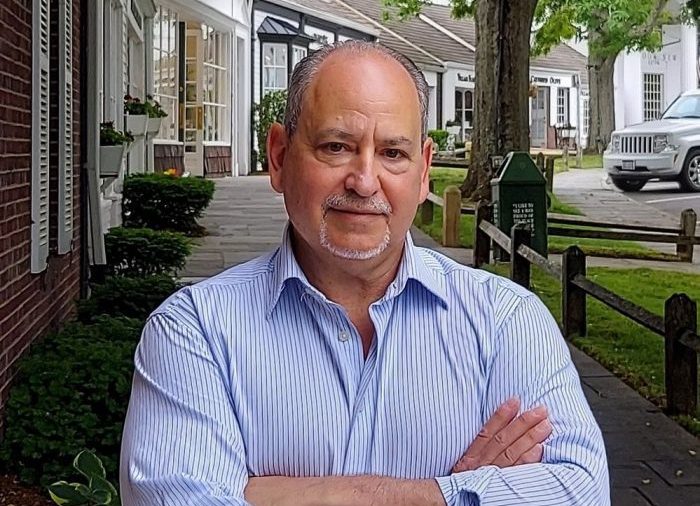By Dylan Friedman
Continuing a remarkable tradition, ultra-runner Eva Casale this past week (April 27 – May 3) traversed Long Island for the ninth time in as many years, completing her seven-marathon-in-seven-days challenge – an enduring tribute to the legacy of America’s veterans.
“I started running local veteran races, and during those races, I met Gold Star families,” Casale explained. “I wanted to see if there’s a way we could continue to remember them.” Gold Star families are those who have lost loved ones during active military service.
What began as a personal mission has evolved into nine annual Every Veteran Appreciated (EVA) Weeks and counting, challenging physical limits and serving as a moving educational platform.
Each day, the marathon is strategically dedicated to different fallen heroes, with over 20 Points of Honor. Casale and other participants pause at certain businesses and military memorials to learn about specific veterans and their sacrifices.
“Each time I read those plaques, it really reminds me that I am here because of them,” Casale said. “I am able to run these streets and have freedom because of them. That gives me strength when I’m tired.”
Another critical component of the week involves engaging younger generations. Casale aims to create meaningful connections to veterans’ experiences by inviting high school students to participate. Patchogue-Medford High School and Copiague students ran in this year’s event, while learning about military memorials and placing roses at significant locations throughout the journey.
“We took [the students] to a memorial as part of the 5k run that we do at the end of the day,” Casale explained. “After I put down my first rose, I would share with some of the other students, [and] they would do the same thing. They were actually understanding why it was there and why it was important.”
Casale’s personal connection to the military is rooted in her father’s experience of serving in the Korean War. “He never spoke about it much, if at all,” Casale recalled. “But I think there is a certain generation that does not speak about it, but they still need to be thanked for their service, so that is what I am trying to teach,” Casale continued.
For Casale, whose athletic background already encompassed feats of extreme endurance, the demanding seven-day marathon format emerged as a fitting and impactful way to amplify her message.
With a background in ultra-running —having completed 50- and 100-mile events — the seven-day marathon format was a natural choice. “I did this seven-day format once before [doing this event annually],” Casale said. “I chose this format because it brings more and more awareness over an extended period.”
Maintaining physical readiness for such a grueling challenge requires careful recovery strategies. Each night, Casale used compression boots for several hours, a ritual she credits with making “the world of difference” in her ability to continue running day after day.
When asked about the event’s future, Casale maintains that she will continue doing it as long as possible.
“I mean, every year I have been asked the same question, right?” Casale said. “I would say as long as I can, my team is really excited, because next year is the 10th year. So we will do the same format, we are excited, and then we will see from there. At this point, my answer is always, as long as I am able to do it, and as a way to thank our veterans, we will continue with our mission.”
As the event approaches its milestone next year, it is a powerful testament to the enduring spirit of gratitude and remembrance. Through seven marathons, countless stories are shared, and a commitment to honoring those who have served, Casale continues to transform athletic achievement into a profound act of remembrance.
“We want people to recognize that gentleman sitting in the diner wearing the Korean War hat and say, Thank you, thank you for your service,” Casale said. “We want people to thank the woman across the street who served in the Army or the Navy. We want them to say, thank you for your service. That is where part of our mission is. We know we have that opportunity to remind people to do that.”













 “It’s pretty cool that we’re still here, 100 years later,” Eric Johansson, president of the loyal lodge, said. “We have got a lot of cool stories and history to share.”
“It’s pretty cool that we’re still here, 100 years later,” Eric Johansson, president of the loyal lodge, said. “We have got a lot of cool stories and history to share.”


